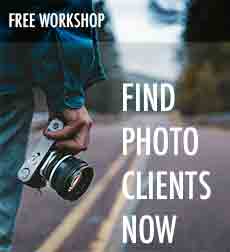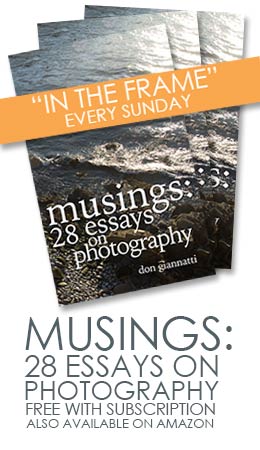Content is King
In preparation for the Social Media Marketing article, I came to the realization that most of us have trouble figuring out what to say about ourselves, so I decided that we first need to talk about content – both on the website and in the portfolio. Whether your printed portfolio, your own website, tweeting, using a fan page, blogging, or any other content outlet, we need to focus on the #1 rule in creating an enduring web-based marketing strategy: Content is King. Yes, I consider your printed portfolio part of your web-based marketing strategy. Since we rarely show our portfolio to anyone who hasn’t already seen our website, it becomes part of the overall web-based strategy.
Your target audience falls into two distinct categories: prospects and repeat business. Let’s address these demographics separately.
Repeat Business
Existing clients are relatively easy to market in 2010. In fact, they are easier than ever. All you need to do is open a media channel to them and then provide interesting photos and bits of written content that let them know you’re active and progressing in your craft. They want to know that they’re working with someone who is consistently producing quality content and social media is the best place to keep them informed of your work.
The flip side of social marketing to your clients is that you need to be watching their channels and occasionally providing positive feedback to their content. This way they will know you’re staying in touch. Don’t be sales-y on your comments, be genuine. Keep an eye on their business trends and send them the right marketing messages.
New Business
New business is a totally different endeavor. Attracting new business through a fan page or twitter is much more difficult because there is so much competition for the attention of your client and there’s no direct way on these networks to reach out and impress the prospect with your style and expertise before they begin to follow you. Yeah, the best content in the world is powerless if nobody ever sees it.
Another very interesting fact about social media is that prospective clients hardly ever follow you. From my conversations with other photographers and my own experience, most of our followers are other photographers, friends from outside the industry, or existing clients. When I started on twitter and my fan page, I expected mostly potential clients to follow me. In reality, it has been other photographers who are following and contacting me through Facebook or my own website. I don’t feel as though putting the work into these media outlets is wasted energy, but it is something that should be understood and analyzed before making the commitment to social media. Eyes wide open.
The most effective way to engage a prospect is to show them that you’re constantly updating your content with stuff they find interesting. They need to understand that you’re a working professional and that you are an approachable and knowledgeable individual.
(There is more from Daron after the jump, and you must read his entire article. I just had to jump in with a few items before we leave the front page. Workshops are going great, and I do have openings in Omaha and New Orleans which we will see a ton of push on. I am so excited about bringing the concepts of great lighting and professional photography to those areas.
We are working toward a seminar titled Going Pro NOW with Selina Maitreya, Jack Hollingsworth and myself. I am excited like crazy about this project. The price will be wonderfully affordable and the seminar will have you ready to embark on a professional career, or fine tune where you are going currently. We are planning three cities at this point: Seattle, Chicago, Boston. If there is anything that has you stymied and think this seminar should address it, let me know so we can look at making the seminar the most informative you have ever attended. NOTE: We will not be addressing tax, licensing, incorporation and similar issues that are best left between you and your accountant.
One last thing. This week promises to be a big one for LE. We have a review of Nick Onken’s new book which will launch Tuesday and an article on the touchy world of model releases sure to bring a lot of controversy… heh. That’s me. Shaking the hornets nest!
So on with Daron’s great article on Content for your Portfolio.
Portfolio Images
Choosing images for your portfolio is very tough. I have been doing this for 20 years and still sweat the correct images. Occasionally I even totally miss the mark and show the wrong printed portfolio entirely. It’s a tough market and you have to communicate with your reviewer.
When I am preparing to show a book, I gather as much information about the client as possible. I will read their publications, Google them and see who they work with, and make phone calls to contacts in the industry who I know have worked with them or may have some experience to share. Once I have a good idea of what type of work my reviewing art director sees on a regular basis, I attempt to figure out what they like. Remember, if they are reviewing your work, there’s usually some type of opening.
Now that I believe to have a handle on the needs of my prospect, I attempt to build my portfolio around that assumption.
I will pull my strongest images that I feel meet their expectations from my archives. I will mix in different types of images that show my strengths and style as a photographer. In fact, I try to use mostly images that didn’t have specific art direction- ones where the entire concept is my vision. I feel that this communicates a stronger sense of my style than showing images that were closely directed by another creative professional. I also like to show a good number of paid work mixed in with my personal work – if the paid images are strong enough, it is a much smoother conversation when the AD starts asking who you were shooting certain images for. They do ask.
Once I have about 50 images, the goal is to cull them down to the strongest set of images that work and flow well together. For general commercial relationships, I prefer to show 24 images – but when the style or scope of your reviewer is much narrower, it’s best to show less unless you really have the depth of work.
You can’t show a weak image in your portfolio. I can’t say this enough. Your book is only as good as the weakest image. Missing the mark with a client and showing a bad image are two different things. Showing them images that aren’t what they’re looking for may mean that they’re not going to hire you, but if they’re solid images; they may refer you somewhere else or remember you in the future. This has happened to me more than once.
Once you have strong images selected, it’s time to figure out what order to display them and which images won’t fit into the lineup. There might be some great images that just don’t work with the book your displaying. That’s fine. If you present yourself well, your reviewer will take the time to visit your website and see what else you have to offer. I tend to put images together by category then find smooth transition images within those set. These transitions my be through mixed-subject images or through color palettes. Looking at the images and analyzing them should give you a pretty good idea of what flows and what doesn’t.
There has been a lot of talk lately about choosing a color palette for your work and shooting within that palette, creating a strong body of work with a concise feel. I couldn’t disagree with this approach more. In our markets, we may need to show work within a very wide array of subjects and styles, so tying ourselves to a specific palette will make creating this diverse portfolio very difficult.
Printed Portfolio
There is debate over what makes the best presentation, some AD’s are adamant about not using presentation books with poly sleeves and others are annoyed by buckles and latches that are on the more expensive presentation books to make them fancier. Choose work that speaks for itself and you won’t need to buy an expensive case and minor peeves of the reviewer will be forgotten by the third image. In my early days, my book was an 11×14 Oriental Seagull box. I got a lot of jobs with what was in that box. I doubt the box itself lost me any work.
I would love to have a hardbound book of my work that I show to prospective clients, but my work changes so often and I tailor my book to each reviewer (I haven’t showed the exact same book twice in the last 15 years) – I am just not willing to invest in a custom book for every presentation. I have two books. One is 8×10 and the other is 11×14. Both have the poly sleeves.
Portfolio Presentation
I strongly prefer to have a face-to-face review. I consider it a job interview – with a resume of photographs rather than a written history of your experience. I like to be available for any questions that may arise and to watch the eyes of the reviewer. It’s important to use this opportunity to present yourself as the professional that they will be both working with and sending to their clients. You must be a professional that can walk into any situation and make it work when their reputation is on the line.
Hopefully you will be asked questions about images. I personally love this type of review. An anecdotal story about how an image came together or the opportunity to drop names of previous clients can really help close the deal.
Thanks to Daron for sharing this solid information. For a look at Daron’s work, visit his site and blog at DaronShade.com – there is a wealth of information there.
For more on Going Pro, visit that area on Lighting Essentials and let us know what you think. To follow me on Twitter, click here. To follow Daron, here ya go!









burn :: paint :: to :: on :: i :: the :: for :: have :: use :: become ::